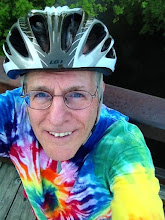In the late 1970s, some American psychiatrists saw that powder cocaine sniffing was not a terribly dangerous practice. But they became aware of how addictive cocaine base smoking was. At first they dismissed as hysterical the reports from professional colleagues in Peru and Bolivia about the devastating practice of smoking coca paste or basuco. Then American researchers there confirmed the intense addiction, and occasions of hallucinations and psychosis that were found.
They faced a dilemma. Educate drug abuse prevention and treatment professionals about the phenomenon, but risk the substantial likelihood that the press would run wild with scare stories that would attract many Americans who were sniffing cocaine to the intense feelings of pleasure that base smoking creates, leading to a cocaine abuse epidemic. Or keep quiet about the phenomenon hoping to minimize or delay the spread the phenomenon. In six or seven years, base smoking -- a/k/a crack smoking -- was spreading widely throughout the nation. (Was this delay a success or a failure?)
Gary Webb wrote about this in the first chapter of his 1998 opus, Dark Alliance: The CIA, The Contras, and the Crack Cocaine Explosion.
Other features of the crack epidemic, of course, were the changes in drug enforcement policies and strategies that discouraged marijuana exports from Colombia and Mexico in favor of cocaine export, the economic dislocations of the 1982 recession. These were the changes in production, distribution and among users identified by Michael Agar in flow theory as the factors leading to an epidemic.
There is a contemporary harm reduction conundrum as Earth and Fire Erowid observe in their June 2009 analysis "Spice & Spin-offs: Prohibition's High-Tech Cannabis Substitutes". Spice is a material that purports to be legal herbs, sold as incense and "Not For Human Consumption," but whose fraudulent labels fail to mention hard to identify, synthetic compounds it seems to contain such as HU-210, JWH-018, and/or an unnamed homolog of the cannabinoid agonist CP 47,497.
"The Spice phenomenon gives us a glimpse of the complexities to be faced in the future when providing harm-reduction and health information for an ever-shifting, ever-expanding profusion of psychoactive drugs, drug combinations, and technologies.
"Spice is a fascinating test case for unusually potent drugs of the future. The Spice story is part sci-fi, part Prohibition-style bootlegging, and part crass commercial venture. This new generation of recreational "research chemical" cannabinoids and cannabinomimetics are in the first wave of high-tech crypto drugs, more of which may be just around the corner. The evolutionary pressures of the last century have created a climate where new potent drugs are not only obscured, but obfuscated using specialized technical knowledge that even expert laboratories have difficulty sorting through."
What is the likelihood that the manufacturers and distributors of "spice" can replicate the enormous scale of distribution we witnessed with marijuana in the 1960s and 1970s, cocaine in the 1980s, and MDMA in the 1990s? It depends on production costs, profit potentials, catching the criminal wave of production, and the cultural wave of desire. With marijuana, cocaine and MDMA, at least the distributors were upfront about what the drug was, or was supposed to be. With "spice," the manufacturers and distributors aren't even telling what the active drug is! The potential for a lot of people to get hurt is that much greater.
Prohibition is dangerous! Sorry, that was so obvious. Sphere: Related Content





1 comment:
nice post. thanks.
Post a Comment